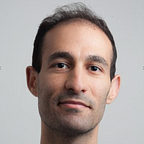3 Ways You’re Being Nudged
6 min readMar 21, 2022
The concept of “nudging” has transformed how behavioral science is applied outside of academia. It refers to the art of crafting a person’s decision-making environment so that they’re subtly biased toward one decision over another. Businesses love it because they can quickly and cheaply attract more customers. And governments love it because they can encourage people to act in desirable ways without necessarily changing laws or restricting…
